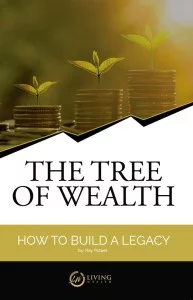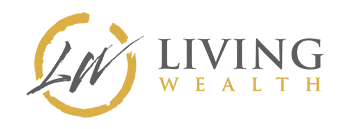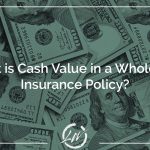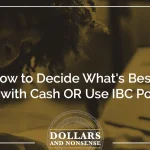In this episode, we’ll pick up where we left off in episode 19. We’ll share how to build the perfect life insurance policy to use for becoming your own banker.
The primary goal of this episode is to discuss why we do what we do. What it focuses on the life insurance policy is when doing banking. And, in the last episode, we shared all the reasons why you’re not supposed to use other types of policies and other methods to design policies.
So if you haven’t listened to episode 19, we suggest you listen to it first because we went through a few important foundational points. And you may want to know that we’re going to compare.
When it comes to building your own banking system, the focus is not on benefit. Instead, we’re cash focused. So the goal is to actually put as much of your premium dollars into a paid up additions rider as you can. Which will stuff the policy go straight into the cash value. And in this episode, we explain how this is all done.
The Perfect Life Insurance Policy:
- The correct policy for use in Infinite Banking
- What is a paid up additions rider and how is it used
- What is a mutual company
- Traditional Life Insurance vs. Infinite Banking
- Being cash focused vs. benefit focused
- Understanding guaranteed interest rate vs. guaranteed cash value
Want Financial Freedom?

Start your journey to financial freedom with this first step.
Get our 122 page eBook The Tree of Wealth here now.
Podcast transcript for episode 20: Perfect Life Insurance Policy
Nate: In this episode, we’ll pick up where we left off last time and discuss how to build the perfect policy to use when becoming your own banker. She’s Holly and she helps people find financial freedom.
Holly: He’s Nate, he makes sense out of money. This is Dollars and Nonsense, episode 20. If you follow the herd, you will be slaughtered.
Nate: All right, Holly. For those who didn’t listen to the last podcast, I may suggest that you go back because we went through a few things that you may want to know that we’re kind of going to compare to. I guess. The main goal of this podcast episode is to discuss why we do what we do as far as the policy is concerned when doing banking.
Last episode we told you all the reasons why you’re not supposed to use other types of policies and other ways to design policies. We’re going to compare that today. Probably suggest going back and doing that.
So, Holly, we’re doing banking. We are very specific on what we want to do for banking. Holly, what is the policy that we want to use when doing banking?
Holly: Well, we want a traditional whole life policy with a mutual company. But we also want to be able to add a paid up additions writer onto that policy. We need not only the whole life insurance policy but we also need the paid up additions writer that can be added. A lot of people ask me, “What is a paid up additions writer?”
My easiest explanation for that would kind of be like saying it’s a single premium writer. Which means you pay maximum cash, basically, for minimum death benefit. You’re buying it strictly to have cash and it buys you a little bit of guaranteed death benefit. What would be your explanation, Nate?
Nate: Yeah. I mean, the p-way, I just liken it to the cash writer. I just make it real simple. The p-way writer is just a way to stuff cash value into the policy as much as we can. Especially works well in the early years.
So, the p-way writer … if you don’t put it on, Holly, it’s going to take two to three years before you even have any money in cash value in your policy. It’ll be just big fat zero’s of cash value.
Holly: Yeah. I put $10,000 in, how much cash do I have? You’ve got like $2.
Nate: $10 bucks and you’re like, I can go to McDonald’s for that but that’s about it. That’s what you desperately need the p-way writer on. Or else the policy is going to underperform and it won’t be a banking policy. If you don’t put it on, it’s more of a death benefit policy. Which is okay but not ideal if you’re going to be doing banking. You want to actually get as much cash as you can.
I think we’ll get into a little more details on that, but you also mentioned something else Holly. You said mutual company. That’s very important too. What do you mean when you say mutual company?
Holly: A mutual company is a company that is not controlled by stock. Basically the share holders of the company are those individuals that actually own life insurance policies. You are a shareholder in it. So, we’re a bank … when they make extra profit, it goes to share holders of the bank. Extra profits in the form of dividends go to the share holders of a mutual company.
If you’re going to put your money in the stock company, you’re losing control of it right away. You don’t really have a say in anything above and beyond what’s guaranteed for you.
Nate: Right. The mutual company, you’re the owner when you buy a policy. The only way to get ownership, is to buy a policy with them. It’s even, actually, detailed even further that only certain types of policies let you obtain ownership. Last week we talked a lot about the various forms of Universal life. Mutual companies can sell those policies, and they do.
The question is, when you buy them, the Universal life, do you have any ownership say?
Holly: No, you don’t.
Nate: So, it’s only participating whole life policies with mutual companies that lets you obtain ownership in the company, and allows you to participate in the profits, the dividends of the company. So, instead of a stock holder getting the profit it’s the policy holder getting the profits of the company. It’s very crucial you have those two.
We’ve got the mutual company, that you buy a participating policy with a whole life, not Universal life. Then you need to have the cash writer, the PUA writer, on the policy. Now we’re talking.
I want to get into the why’s of this policy. Why does it work so well? We’ll do that just after this quick word from our sponsor.
Speaker 3: Are you tired of being stressed about money? The Dollars and Nonsense podcast is sponsored by Living Well. You can visit Livingwell.com/freedom to get your free smart money e-book and sign up for a personal wealth presentation, today.
Living Wealth is a family owned and operated business, which works with individuals, families, and even small businesses to slay the money stress dragon. Our clients receive individual coaching regarding wealth creation and how to create a retirement income. You’ll be enabled to have cash today and in the future.
Since 1972, Living Wealth has been committed to educating smart people on basic money principles to assist them in becoming debt free and finally find financial freedom. Let us help set you free. Remember to visit Livingwealth.com/freedom to receive your free e-book. And even sign up for an individual wealth presentation today.
Holly: Welcome back to Dollars and Nonsense. Nate, we were discussing right before the commercial break why we want to design the policy this way and the benefits of that policy. One of the keys is really the design of the policy and why that cash value, that paid up addition writer is so essential in driving cash.
Do you want to explain that a little more?
Nate: Yeah, sure. The traditional way to buy a policy, you know, if you walk into your average insurance agents office. They’re not maybe versed in banking, the banking concept. Their first goal is to figure out how much you’re worth. Okay, Holly.
They go in and they say, “You know, Holly, you make $100,000 a year. That’s worth a lot to your family. If you were to die today, you ought to replace that income with this life insurance policy. You may need a million dollars or one and a half million dollars or something like that in insurance. And here’s how much you’ve got to pay into that to get the policy at the size you want.”
Even if you were to buy that policy with Whole Life, you could also do Term, but we’re going to stick on the Whole Life. Many times you’re not going to put a PUA writer on that policy. Because the goal is not cash, it’s death benefit.
So, you go out and you pay your premium. Let’s say, as you said earlier Holly, the premium is $10,000. How much money do you have with no PUA writer.
Holly: Zero, Nate. You have nothing.
Nate: You got a nice big death benefit.
Holly: I want to just way, if you’re buying life insurance it’s called life insurance. It’s not called death insurance. Really, it’s life insurance. It should be life giving, to an extent. That’s why you want that cash on there because we always need cash to live on. The death benefit doesn’t benefit us.
Nate: So, big zero, you’re one. Big zero, you’re two. Maybe big zero, you’re three.
Holly: Even if it’s not a zero, Nate. It’s not much.
Nate: That’s the big issue. Is you want to make sure when doing banking. We say, “Hey, the goal of this is not to get a death benefit. That’s traditional life insurance. We want to get cash. That’s what banks care about, that’s what we care about. The way to build a policy for banking sounds almost reversed to what traditional insurance is. Traditional insurance is how much benefit can you give me for a small amount? How little can I put in to get the most benefit?”
Well, with banking, we’re not benefit focused. You’re cash focused. The goal is to actually put as much of your premium dollars into PUA writer, paid up additions writer, as you can. Which will stuff the policy go straight into the cash value. You want to put as much as you can into the PUA writer, which gives you the cash to work with upfront. And we’ll give you the best policy.
Subsequently, it will give you the lowest death benefit early on that you could get on the money you’re putting in. But it’ll give you the most cash and that’s the most important part of the game to most people is the cash. Of course, it has to be the new banking. If it’s not you can go probably talk to a different agent and they’d be happy to sell you a death benefit.
But that’s not really what we’re about.
Holly: The key there is that we want to be putting as much into the paid up addition writer. We have seen policies where somebody said, “They told me it was a banking policy.” And basically they put $10,000 into a policy and only $120 of that was paid up additions writer. How much cash do they have? Around $100. They don’t have the $10,000 that they thought they were putting in.
The biggest reason for that is because most life insurance agents do not know how to design the policy to give you that maximum cash and have death benefit. What they do is they stuff so much cash in, it becomes a taxable event. A modified endowment contract. Really, we have taken the pains and the time to really learn and understand the products to design it. So, it works for you.
Nate: For those of you who don’t know, maybe we’ll do an episode on it. But I don’t know if we want to spend too much time. Essentially the IRS has come in and pretty much determined on any policy by the formula they built what they’re going to call life insurance. That is based on really how much premium you’re putting in compared to how much cash value you’re getting. Big long conversation, I’m not going to get into it today. But that’s what Holly was saying when it [inaudible 00:10:36] is it becomes a taxable policy instead of a tax free policy.
That’s really the guideline for us, Holly, as far as how we build it. Is snuggling up to that neck limit, without crossing it. That’s the best way to build the policy.
That’s design of the policy. I wanted to get a couple reasons why the policy works so well. One of the things I wanted to compare it to is last weeks episode. The nice thing about a Whole Life policy, participating Whole Life, is that the costs are fixed. You can’t just randomly have the insurance company go out and increase the cost on your policy and start eating away your cash value.
Unlike Universal Life, which maybe they say the policy is guaranteed to grow. The interest rate is 3% guarantee. The thing is, you don’t want a guaranteed interest rate, you want a guaranteed cash value. In Whole Life, you actually have a guaranteed cash value. They say, 10 years down the road, they have a number there of what your policy is guaranteed to be at.
Holly: In the Universal Life, they don’t have that. They have a projection based on an interest rate that’s guaranteed. Guess what, 3% on zero dollars is still zero dollars. That fixed rate is important on the cash value because on the guaranteed side, that is a contract that the insurance company has with you. If that number says you have this much in cash value, on the guaranteed side, that is what the guarantee is that they have to give you. That they have guaranteed 10 years, 20 years, down the road, what that cash value is.
It’s not a fictitious number that they made up or they thought about or said, “Oh, that looks pretty good. It actually is a number that’s been generated that’s guaranteed. That they are responsible to give you that if you request it.
Nate: Exactly. The guarantee doesn’t even include those dividends we’re talking about because you’re the owner of the company. Which just blows everything out of the water. So, the costs are fixed. We can’t get the rug swept from out underneath us and fall down and lose money in this deal because we know what’s going to happen.
And that makes, to me, makes it easier to plan with. That’s another big reason I like it. We don’t have to make plans based on theory or hope. You actually have numbers to focus on. We can plan with and build a financial plan based on real numbers. Not hopeful numbers.
Holly: And because that plan is so easy to follow, you have it laid out in front of you. You’re not wondering, oh no. What if this happens? What if that happens? What if they raise this? What if they do that? It really is a guarantee. Because you can see that, you can actually, strategically plan for the future and know when I put this much money in, this is what I could potentially borrow out from. Or this is how much death benefit I have, guaranteed. It’s not a guessing game at all.
The reason it’s not a guessing game is … another reason why we like it is, it’s been around for over 100 years. These companies are tried and true. They’ve tested … or weathered the storms, perse. But they’ve been around longer than our IRS. They have managed to survive through the great depression and they still are in existence.
These are companies that have maybe been in existence 125 years, 130 years and paid dividends for 124 of those years. They have always paid dividends and have always been able to provide the guarantees. They’re not just some new company that just formed and they don’t know what they’re doing. They have a history of being reliable and dependable.
Nate: Yeah, exactly. We know it works. Not because they just created this brand new policy that’s called a banking policy. It’s been around, people just forgot how to use it. Agents stopped selling the way that they should have been. Even as we’ve talked about before on these podcast episodes. People like Walt Disney and JcPenny. That’s a very long time ago that they used it. That’s 30’s and 40’s and 50’s they were using these policies.
So, people have been using this banking idea for a very long time. That’s how we know it works. This isn’t some new angled idea based on new things. It’s just based on reality. A reality that’s been around since the 1800’s, when these companies got started.
One other last thing, I think before we can close down. I think the number one thing, why it’s the best product for banking, is that I know without a shadow of a doubt, based on all the guarantees and different things we’ve talked about that when I borrow from the policy, I know exactly what I’m going to get when I pay it back. I know exactly how much money I’m going to make when I do that.
I know that I can borrow from my policy to go buy a car. I can pay my car loan back to my policy and actually make money. I can get back my principle interest and make a profit, regardless of what the stock market does. Regardless if the insurance company wishes they could raise the cost. They can’t and IUL and things like that.
I just know what I can do and I know that I’m going to make money and that brings me a lot of peace.
Holly: The peace is what’s really important, Nate. Is knowing that you can put this in, that you can still use that money. For me, that’s one of the keys here is my money isn’t just sitting somewhere in a bank collecting dust or a retirement program I can’t touch, but I can actually take that money back out and use it. Like you said, to buy the car but I know what’s going to happen when I pay a loan back, how it’s going to increase and what’s coming back to me.
It’s actually that peaceful, you don’t wake up in the morning and wonder how the stock market is doing at all. Or did that investment turn out good? I wake up and go, my cash value grew today. Crazy terminology, but with what everything going on in the world and the way our economy is, I don’t worry about what’s happening with the economy because I know my money is in something that’s guaranteed that I know is going to provide for me or my family. I think that’s really important.
The other aspect is, for me, and a benefit of it is that the money is growing tax free. It is after tax dollars that we’re putting in there but this is tax free growth. For me, it’s something that the federal government can’t come back and say, come give us some more money because your policy grew by this much.
That growth isn’t dependent on what the IRS and the federal government tells me I need to pay them. That growth is tax free growth that goes to my loved ones or to me, to live on later on in life. That is really important to find something that actually grows tax free. That you don’t actually have to pay taxes on the growth of a guarantee.
Nate: You’re right. And one last thing, I keep on saying one last thing. There’s just so many things, Holly, it’s hard to come up with one last thing. But one thing I just came into my mind was, I really don’t care to take risk with my banking system. Everyone here needs to remember that when you do this banking, becoming your own banker strategy, the policy itself is not supposed to be an investment.
It’s not an investment because there’s not risk. Don’t think of the policy as an investment where you’re trying to shoot for, man, I want to make 10% rated return. That’s okay. But remember, the key is banking. It’s not investing.
I want to have my banking guaranteed to make me money no matter what. I can use my policy to go make another investment if I want to take a calculated risk somewhere else. Whether in real estate or in the stock market or gold, or whatever it is. I want to be able to have my banking system guaranteed me to make money.
If I want to pull money out, borrow it out, and use it to go take risk. I can. But I don’t want my banking system to be at risk in any way.
Holly: That’s the beauty of it, Nate. Is that if you want to make that investment or you want to do something with real estate, that if the money has gone through your policy and then you borrowed it out, you can use that money and take the risk. But the policy is not at risk.
I just like the beauty of the fact that I know I can use that money, go buy that car that we may need. If it was a bad investment, the car is a dud and I turn it back in. It didn’t cost me really anything because I’m going to still have my policy growing. I’m still going to be able to turn things around because the policy has the guaranteed rate.
That’s just amazing to know you can put the money somewhere, keep it safe where you’re in control. Go and take risk, if you want to, but you still, at the end of the day, have a guarantee with a life insurance policy.
Nate: I think we can probably wrap this up right there. For those of you who are just starting out and maybe new to the Podcast, new to learning some of these things. This Podcast certainly doesn’t do it justice as far as all the things that you can learn about it. But you can learn more at our website, livingwealth.com. Where our founder, Ray, has written a free e-book that you can download.
We’ve got a link to a course that we’ve built called lifestylebanking.com. It’s a free course on this subject. We’ve got free videos as well, block post, things like that. You can learn a lot more in detail there. I really urge you to go on and check that out.
Holly, any last things before we close this one down?
Holly: I think we should make sure the reasons why … we really reiterating, the reasons why this is such a good product and something you should really look at and determine if it’s for you is number one it is life insurance. It’s going to give you life and be able to provide living and that cash that you need. Even later on in life and that you need today.
It allows you to have complete ownership. The guarantee’s are guarantee’s. They’re not made up numbers. The fixed cost. It tells you what the cost is. Those costs don’t change. They can’t change because they want to. It’s easier to plan with.
It’s been around, over 100 years. This has been around and people have used it. Walt Disney, JcPenny’s. They use their life insurance. We’ve just forgotten or stepped away from that. Now it’s time to get back to the roots.
Last, but not least, it’s the best product if you want to do banking. If you want something that’s going to grow guaranteed and that is going to be tax free, it’s the best product for you. That’s really the reason why participating whole life insurance policy is perfect for you if you want to be your own banker.
Nate: Awesome. Yeah, thanks Holly. That will wrap us up today. This has been Dollars and Nonsense. If you follow the herd, you will get slaughtered.
Holly: Get free resources and transcripts from this episode by visiting www.livingwealth.com/e20.









